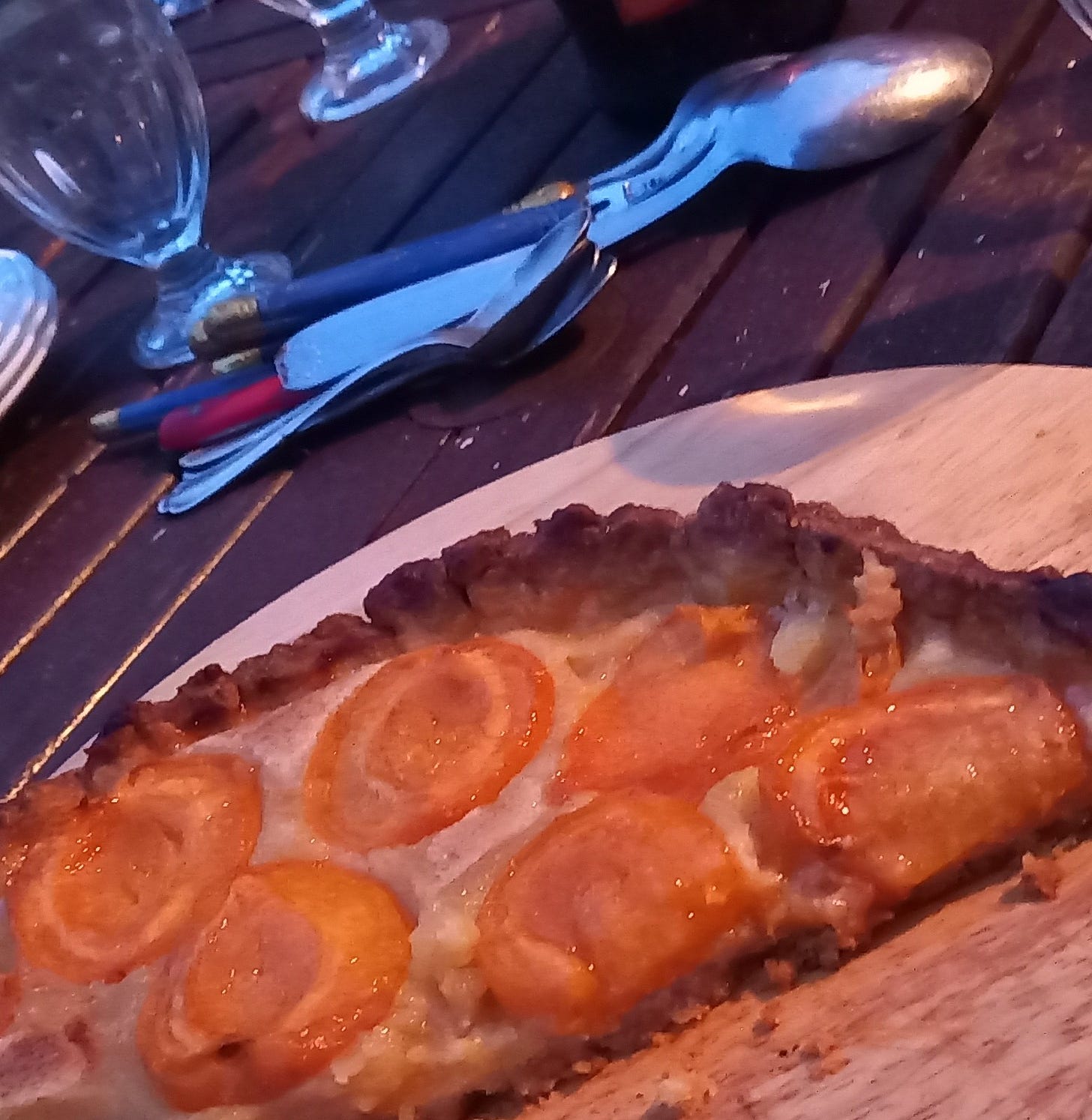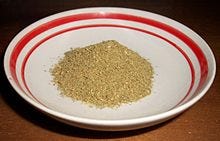Any number of elements can make a great cook – whether that cook is a chef in charge of a fêted restaurant filled with Instagrammers posting their every bite, or a home cook made equally competent through repeated experience in nourishing family and friends. Or Julia Child.
Skill, for one. Professional catering techniques and equipment provide a wage-earning talent more encompassing and sophisticated than the abilities acquired through practical repetition of those who are never going to be paid for feeding people. But both require skill.
Another identifier is the ability to juxtapose ingredients that may not immediately be obvious, but which have enough of a connection to make palate sense and encourage each ingredient to shine. Not the Tuna Salad and Fruit Punch, or vanilla ice cream with soy sauce, chocolate-covered bacon, even, and other unpalatable horrors that excite the internet. Rather, an unexpected combination of flavours that might be traditional to a particular cuisine or the result of a sensitive and inventive palate.
An apricot frangipane is a simple example – that faint suggestion of almond in the fruit brought out by the powdered nuts of the frangipane, and the way the acid of the fruit cuts into the richness of that cream. (We tucked into this one so greedily, I forgot to take a picture of it at its more beauteous.)
Another pleasurable but odd pairing is identified in the mantra from Yorkshire (top right hand side of England), frequently recited across the county at the presentation of an apple pie: “Apple pie without the cheese is like a kiss without a squeeze”. Then a plate appears with a chunk of a hard and salty Cheddar or a crumbly Wensleydale to cut into. Modern chefs, updating the combination, even bake it into the pastry crust, or inside the pie in a layer under the lid. Try it. It’s not unknown in the kitchens of Nova Scotia, where around a thousand migrants arrived from Yorkshire between 1772 and 1775, bringing the combination with them. The practice has drifted down to New England.
The cuisines of Georgia (nation, not state) and the countries around the Black Sea marry with meat and fish elements most of us associate with herbaceous borders. While the French relish blackcurrants or cherries or oranges with their ducks (yet despise the English combination of lamb with mint), the cookery of the Caucasus takes the process much further than those pomegranate seeds drifted over every damn dish to signal ‘exotic Middle East speciality landing now on your placemat’. Marigold petals? Dried, they are key to Georgian cuisine, especially in dishes involving the walnut. And it would be impossible to imagine Georgian food without walnuts. Finely ground, their milky texture does the job that cream and butter and milk do in nations where cows are more prolific.
Dried marigold leaves are vital in khmeli suneli. Georgia’s equivalent of India’s garam masala, it subtly changes the expected flavour of walnut pastes, aubergines, and other common Georgian ingredients. Like garam masala, khemeli suneli is made up from a garden library of herbs: ground coriander seed, celery seed, dried basil, dill, parsley, summer savory, bay leaf, and mint. While some of those can be left out, a second vital herb cannot - the annual Trigonella caerulea, blue fenugreek. A relation of fenugreek, it’s milder and less astringent, growing in the mountains of northern Georgia. Added to stews, its flavour intensifies with long cooking and helps develop the other tastes in the casserole.
Nobuyuki Matsuhisa, familiar to those with deep pockets or expense accounts as the Japanese celebrity chef ‘Nobu’, is a past master of introducing unexpected flavours to each other. He made his name opening a Japanese restaurant in Lima, Peru. Unable to find classic Japanese ingredients, he resorted to using Peruvian herbs and produce in in traditional Japanese dishes. Back in the US, in 1978 he introduced diners at his Beverly Hills restaurant, Matsuhisa, to Black Cod with Miso, pairing sablefish (an unattractive grey fish renamed ‘black cod’ to sell) with a marinade of miso paste and sake. Even now, 45 years later, it is is considered his signature dish.
It doesn’t qualify as a particularly challenging flavour combination, nor one entirely originating from Nobu’s own inventive palate. Curing fish in miso and sake lees is a traditional method in Japan. But fish united with a blend of sweetness and salt is not an experience familiar to occidental palates.
You’re supposed to wipe excess marinade off. But I like it so much, I don’t bother. So my photo is inevitably one of a charred piece of fish and not as Nobu would approve, since the marinade catches when grilled in a way I rather like.
His looks more elegant, like this:
My way is not, in my view, to the detriment of the fish and provides a delicious ‘gravy’. It’s a great ‘go-to’ dish, one when you want to impress (when do we not?) because it involves no cooking challenge, even if you might have indulged in one pre-dinner cocktail too many. The key, though, is the pairing with broccoli. In Europe, ‘tenderstem’ broccoli, which is what anyone who grows vegetables is familiar with, have become a commonplace in supermarkets. But if you can’t get hold of them (and fight for them you should, because in the right cool growing zones they flourish willingly in every domestic garden and are quite as delicious in browned butter as asparagus), buy regular broccoli and break off the florets, paring then slicing the limbs thinly.
Serves 2 (multiply up equally for more diners) With so many liquid ingredients, cup measures are easiest.
2 fillets cod loin or firm white fish (but I’ve made this with salmon about to rot)
3 tablespoons Mirin
1 tablespoon rice wine vinegar
3 tablespoons sake or water
⅓ cup sugar
¾ cup miso paste. It should be white miso. But if you can only find red, that’s fine
250g/8oz tenderstem broccoli or broccoli florets
1 tablespoon sesame seeds, toasted
Simmer all the ingredients together 5 minutes, whisking to incorporate them. Cool then pour into a lidded container that can take the fillets flat. Coat them generously on both sides then marinate overnight - or up to 24 hours. Yes, indeed.
Bring them back to room temperature.
Preheat the oven 200C/400F.
Bring a large pot of water to the boil. Trim the ends off the tenderstem broccoli to freshen their stalks.
Lay the fish, skin-side down if they have skin, on a baking sheet lined with baking parchment. Bake in the centre of the oven till the fish is blistering a little and browned, anything from 8-12 minutes depending on the thickness of the fillets.
Alternatively, you can grill/broil them, around 5 minutes when set 20cm/8 ins from the heat. But it depends on how hot your grill gets and the thickness of the fish, which will carry on cooking once removed. So check.
5 minutes before the end of the fish cooking time, add salt to the water pan and boil the broccoli till al dente, about 3-4 minutes depending on the thickness of their stems. Pierce them with the point of a knife to test.
Drain well and spread quickly on a clean kitchen towel to dry. Divide between two warmed serving plates, sprinkle over toasted sesame seeds, then set the fish alongside.











I love your Julia joke. I totally agree with you about skills- the same can be said for market traders who I researched and found to be highly skilled in all sorts of ways but whose skills were under- rated. As for your cod recipe- it is utterly delicious!
Hi Julia. I'm sorry to remind you of the rapid passage of time, but if Nobu unveiled his black cod with miso in 1978, that is 45 years ago, not 25.
I haven't come up with a name for the aubergine dish yet ...